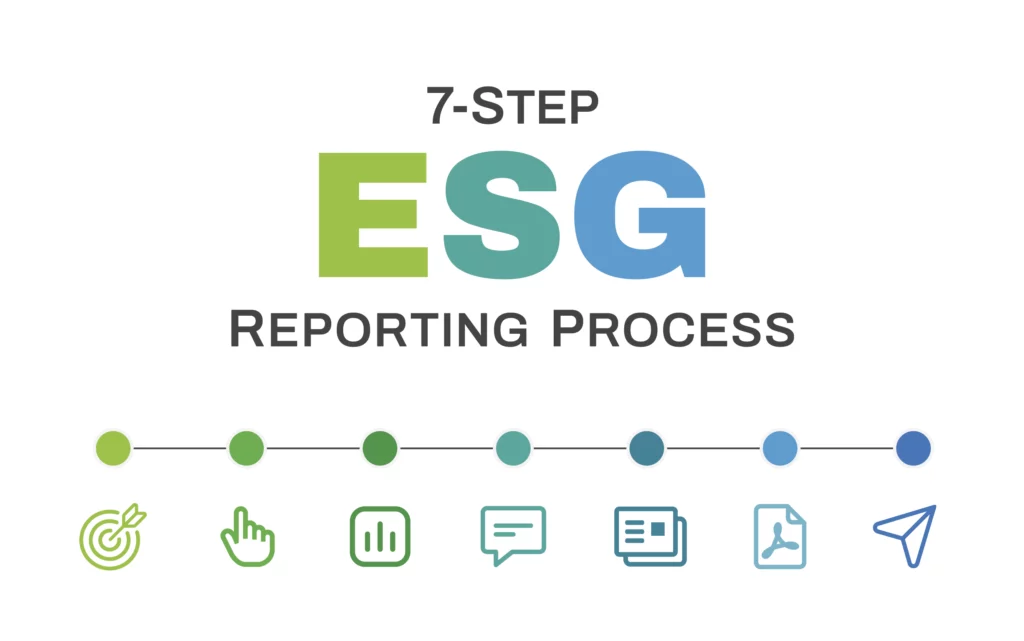Your First Sustainability Report? Follow the Roadmap to Success
Sustainability & ESG, Guides / January 30, 2024
By Paul Gassett

It is anticipated that the Securities and Exchange Commission (SEC) may soon require publicly traded companies to disclose more information about their sustainability practices. One way to prepare is to create a detailed sustainability report that includes information on environmental, social, and governance (ESG) issues.
Companies may need to improve their sustainability reports to comply with new regulations and demonstrate their commitment to sustainability. This might prompt you to create or improve upon your company’s first sustainability report.
DID YOU KNOW
In 2022, a record 98% of S&P 500 companies published ESG reports, 82% of the smallest half of the Russell 1000, and 90% of total Russell 1000 companies. Research shows that annual sustainability reporting is now firmly established as not only a best practice but essential.
Governance & Accountability Institute,
2023 Sustainability Reporting In Focus
But how do you create an ESG or sustainability report that your company’s leadership will endorse, employees will be proud to share, investors will read, and raters and rankers will recognize? How can you communicate your sustainability journey and inspire stakeholders to act while completing the report?
The Sustainability Report Roadmap to Success
The following roadmap is intended to guide early-stage companies who want to integrate ESG considerations into their business strategies and report on their progress and success.
1. Build a team of internal and external partners
To begin, we need to establish who will be part of the team and what their respective roles will be. ESG and Sustainability are usually intertwined with various groups and departments, so many individuals will likely want to contribute. This presents a great opportunity for employee engagement, but it’s important to keep in mind that some team members may not consider it part of their responsibilities.
Your team may also consist of recently appointed executives or professionals who are now responsible for some part of the reporting process. To address this, it’s crucial to bring everyone together for a kickoff to emphasize the importance of their contributions and how they will combine to create a greater impact.
Sustainability training can improve team collaboration and communication and build a functional ESG program that meets jurisdiction requirements by educating your staff on ESG and sustainability fundamentals and risk management, ensuring common understanding.
External partners can play a pivotal role in the sustainability reporting process by providing valuable insights and support in materiality assessments, data collection and analysis, and design optimization.
2. Focus on what matters: Material issues
Knowing what matters to your business and stakeholders is critical to your success. While a materiality assessment is the gold standard, it may not be feasible for your first attempt. But don’t worry, you can still start by looking at other companies in your industry who have already conducted a materiality assessment. This can serve as a guide for your team to broadly identify what topics are of interest.
Analyzing the questions received from Investor Relations, Community Relations or other front-line teams can be a valuable resource to understand what matters to your stakeholders. These questions provide clear indicators that can help you gain valuable insights into the needs and interests of your stakeholders. Additionally, it’s important to consider the information that you want your audiences to know. By taking these steps, you can ensure that you address your business’s and stakeholders’ most pressing concerns and priorities.
3. Understand the frameworks: Identify Sustainability “wins”
Although creating a report according to one or more frameworks is ideal, it may take a lot of work initially. To start, collaborate with your team to set some goals for the report, some of which should be challenging but achievable. You can start small and find your existing CSR, ESG, and sustainability wins.
Gather information from your company’s intranet, social media, and local initiatives. Categorize them into themes aligned with your priorities. Once you have determined what is important to your company, provide anecdotal evidence demonstrating your company’s good corporate citizenship in line with your values.
4. Gather your data: Measure the impact
The key to a successful Sustainability or ESG report is in measuring the impact of your efforts and performance. And to do that, you need data.
Yes, it may take time and effort to gather clean, year-over-year comparable data, but there’s no better time to start than right now.
Collecting data is essential for any business, and while new information may need tracking, a lot of data may already be available. If your company is public, you have much to work with in the 10-K and Proxy documents, and the strict financial reporting requirements provide a solid foundation. Furthermore, your EEO-1 report can provide data on worker safety and diversity, which may already be at your fingertips.
Collect all the data using one of several data collection and management tools. There are quite a few choices and it is important to select one that will work within your organization. If you are unsure, ask your external sustainability partner and be sure to vet them for cost and ease of use across your organization.
5. Craft messages: Explain the “why” of your story
If you want to create an impactful report, you need to have a writer or editor who can effectively assimilate all the sources and craft a narrative structure that is both cohesive and sensible. You must maintain a unified tone and hierarchy and use your unique brand voice to make it stand out. Start with your key messages, as they are the foundation of your report.
To make your report engaging, provide context around the data and stories collected. This will help readers understand how it fits into your business strategy and its operational connection. Establish a central theme to draw in your readers and connect your purpose to your performance, showcasing the value you generate for investors, employees, communities, and society.
To keep your readers engaged, use callouts, facts, and infographics to highlight the key points quickly. Remember, not everyone will read the report from cover to cover, so you need to make it impactful and persuasive at first glance.
Acknowledging the achievements of those who go above and beyond is crucial to a company’s success. By featuring standout teams and individuals who demonstrate exceptional leadership, innovative thinking, and unwavering dedication, we inspire others to follow in their footsteps.
Whether it’s implementing pilot sustainability programs in facilities, developing innovative and efficient product solutions, highlighting initiatives that support local communities, these success stories encourage a culture of excellence and foster a sense of pride within the company. It is important to recognize and celebrate exceptional employees’ hard work and contributions.
6. Set the tone with your leadership message
The CEO’s message in a report often sets the tone for the report. It outlines key sustainability goals and how they support a the overall corporate strategy. This is always the best place to start.
A solid CEO message will define the company’s sustainability strategy, the CEO and Board’s role in it, and how it contributes to the company’s success.
Transparency is key. If a company is starting its journey toward sustainability, it is essential to point that out. Many companies are just now beginning to report on sustainability efforts.
7. Get perspective: Enlist professionals
Next, make sure your message is communicated effectively. Enlist the help of professionals in reporting strategy, storytelling, design, development, and production. You don’t have to outsource your entire report if you’re on a tight budget, but there are several ways to get support throughout the process.
If you need help to see the big picture within your own company, consider hiring an expert who can help you create a report that truly stands out.
Remember, a well-crafted report can make all the difference in achieving your goals — so don’t hesitate to get the support you need.
8. Increase awareness: Promote your report and its content
Crafting a report takes a lot of time and effort. But what’s the point of creating it if no one reads it or the data and progress is not clear enough for ratings agencies to identify? Don’t let your hard work go to waste. One simple tactic is to start with a press release after publishing your report. This will help you reach a broader audience and generate media coverage, thus increasing awareness
Remember, in today’s world of information overload, you need to make a sustained effort to get noticed.
Another way is to feature the report prominently on your company website since sustainability content usually interests many people. A short video or animated graphic draws attention and can be particularly useful with inaugural reports.
You can also repurpose your report’s content for social media use throughout the year, by creating social media messages and sharing infographics and quotes from your report.
Promote your report to both suppliers and remember to share your ESG content with employees via internal channels such as newsletters and intranets. Ensure your report receives the attention it deserves and does not get lost in a sea of information.
9. Keep it going: It gets better each cycle
Getting started on a new project can be tough, but it’s always worth taking that first step. And, the best part is, there’s no wrong time to begin.
As you progress, you’ll grow and evolve, and it’s important to acknowledge everyone who helps you along the way. They’ll be there for you when you need them again.
While your initial reports will be customized to fit your company’s unique needs, you can add more data and integrate new reporting frameworks as you gain more experience.
Learn From Recent Successful First Sustainability Reports
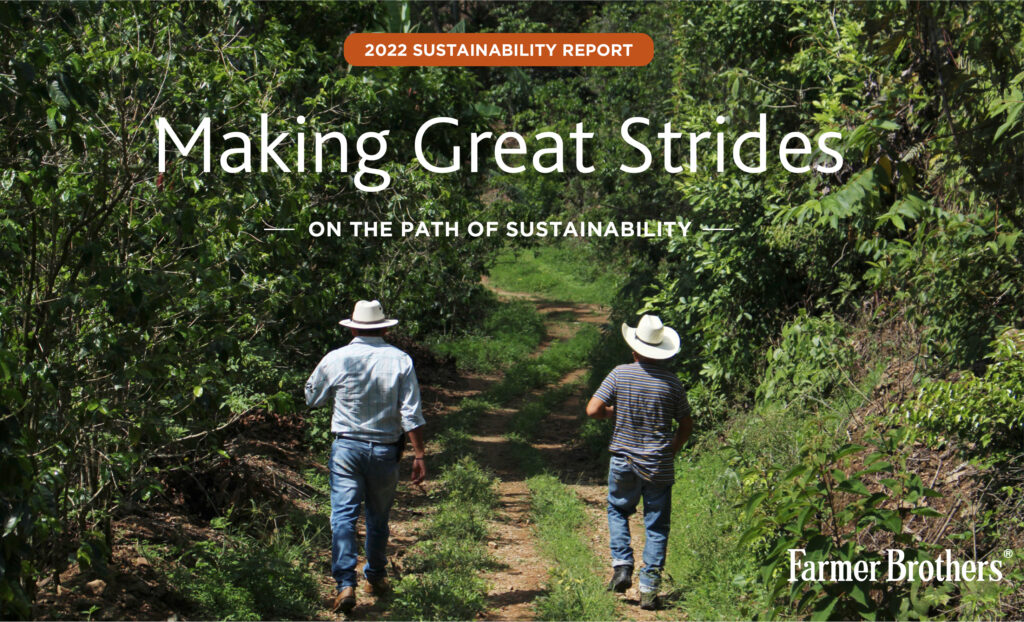
Farmers Brothers
Read the Case Study
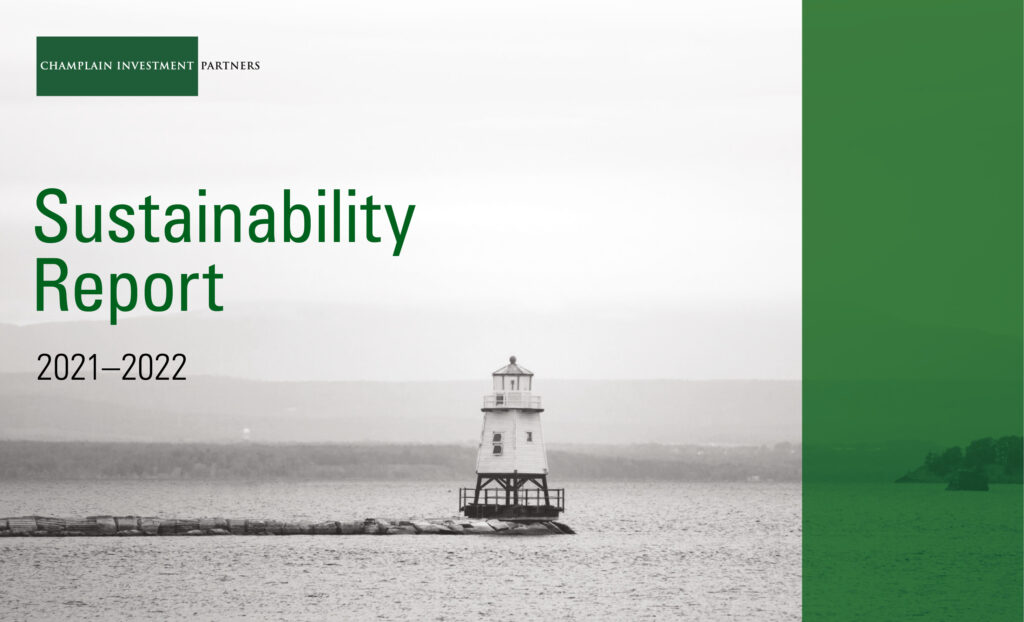
Champlain Investment Partners
Read the Case Study
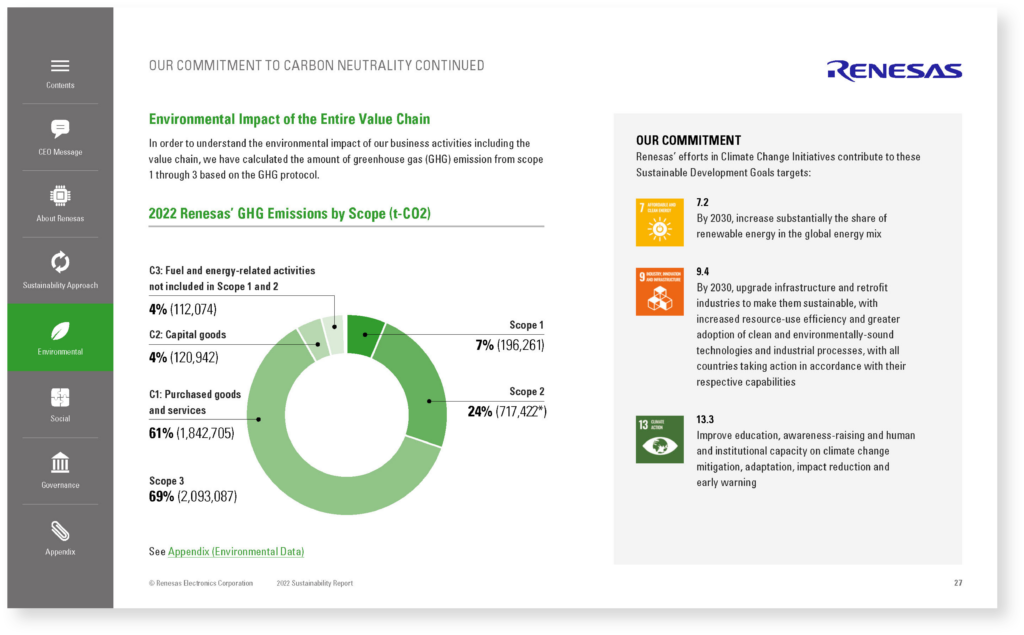
Renesas Electronics Corporation
Read the Case Study
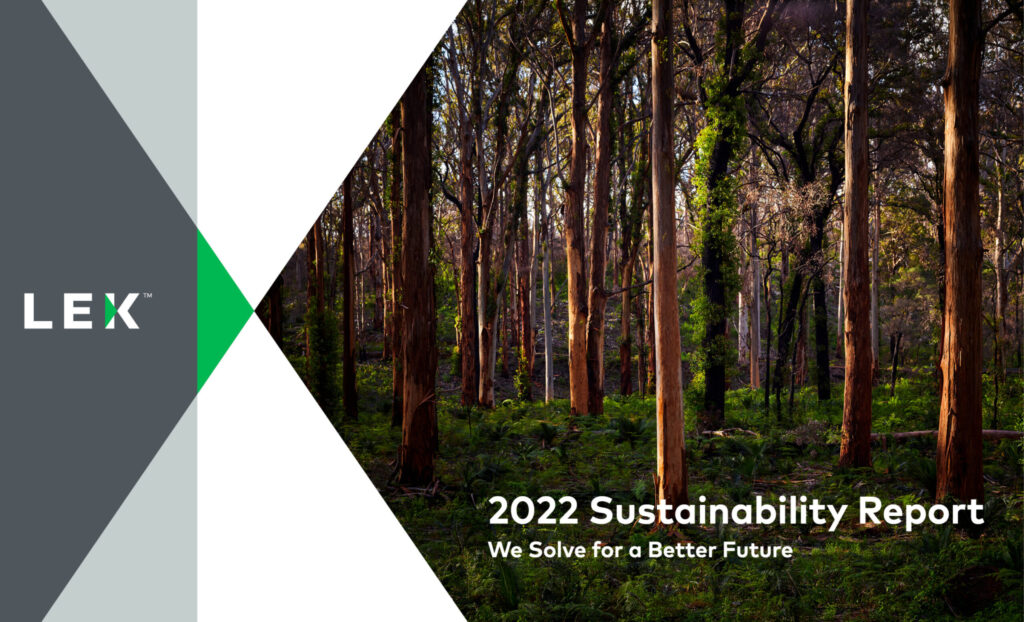
L.E.K. Consulting
Read the Case Study
How OBATA Can Help
For more than 75 years, OBATA has been the go-to partner for companies of all sizes seeking purpose-driven communication strategies that deliver results.
Our sustainability reporting team has expertise in corporate reporting and ESG storytelling, which allows us to assist you in creating and communicating your sustainability story effectively.
We offer a range of services, from training your team on ESG fundamentals to developing an ESG strategy to creating engaging content and creative assets. Our team of experts can help you achieve your reporting goals and inspire meaningful change.
Don’t miss out on this opportunity to elevate your ESG communication game. Email us today to explore the possibilities.
